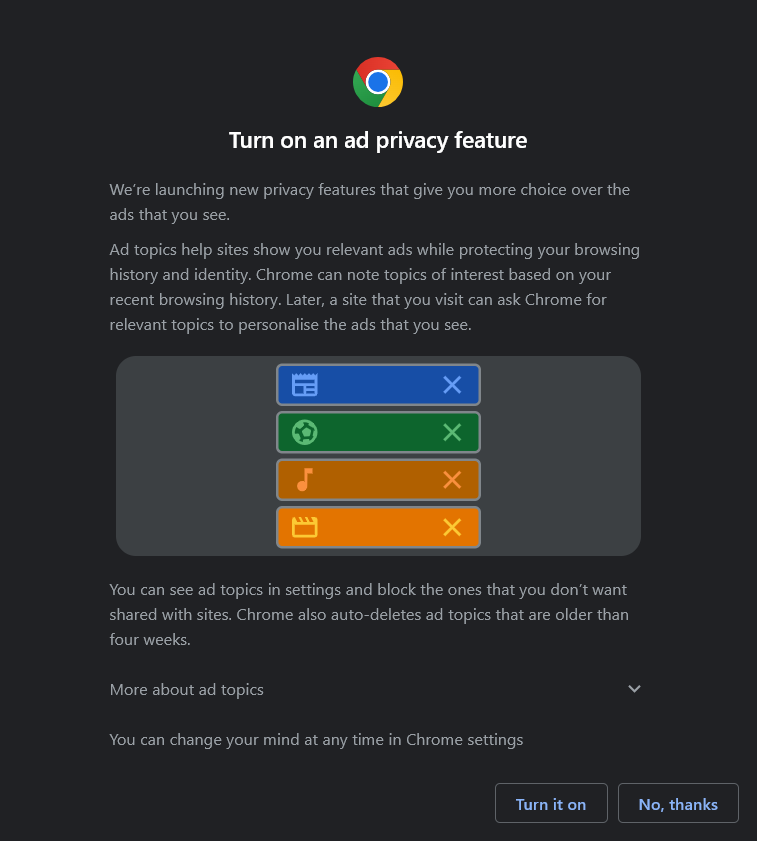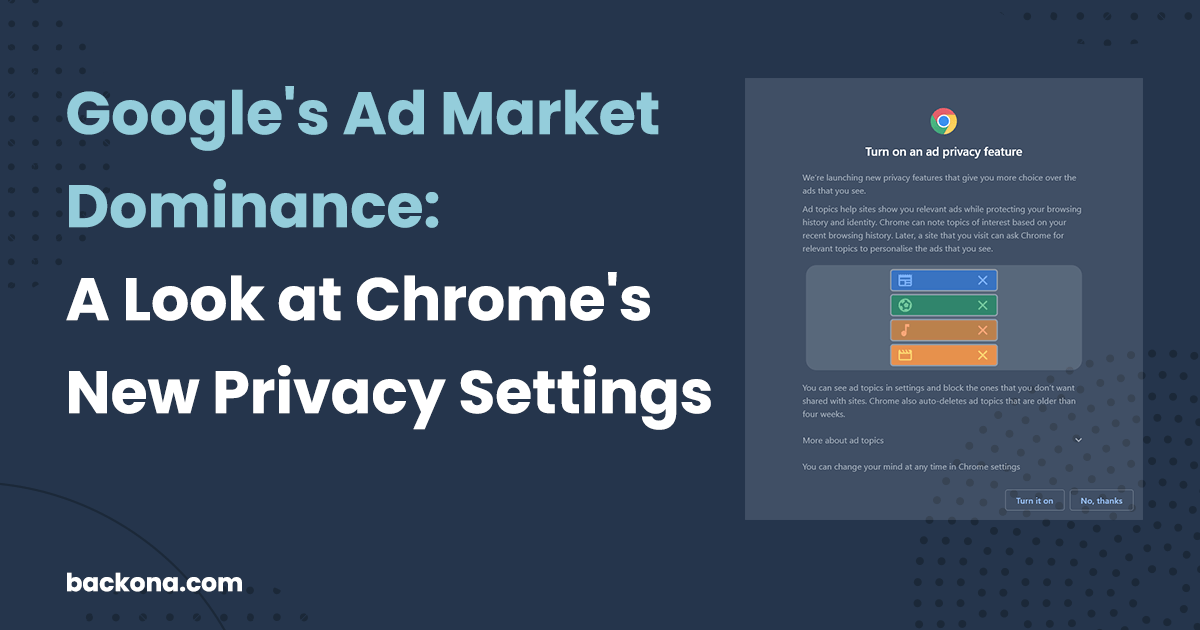
Introduction: The New Update in Google Chrome
The latest update of Google Chrome brings with it new privacy settings in relation to advertising. This update aligns with Google’s initiative to change the way user data is tracked.
The company has been vocal about this revolutionary change, discussing it in various blog posts that delve into the mechanics behind acquiring user data and tracking website activities.
Understanding Cookies: First-Party vs Third-Party
One such blog post by Google titled “Chrome is rebuilding the foundation of the web with your privacy in mind. We’re phasing out third-party cookies” explains the importance of this move. In the post, Google defines cookies as small pieces of data stored in browsers when visiting a website.
Third-party cookies, stored by a service that spans multiple sites, can be used by ad platforms to track users across different websites.
On the other hand, first-party cookies are stored by a website itself.
Enhanced Privacy Features: User Control and Differential Privacy
Google’s new privacy settings pave the way for enhanced privacy protections to keep users safe online.
Chrome now offers users more control over how their data is used in the ads they see. It allows users to block ad topics they are not interested in, while using techniques like differential privacy to protect their browsing history and identity.
The Balance Between Privacy and Accessibility
Privacy and accessibility are often seen as contradictory concepts, but Google aims to bridge this gap. The post highlights that billions of people worldwide rely on the internet as a free source of information, and advertising plays a crucial role in sustaining this model.
Without advertising, creators might need to hide their content behind paywalls. Google Chrome’s privacy protections aim to strike a balance between privacy and access to information, ensuring users can enjoy both.
Beyond Third-Party Cookies: Other Tracking Methods
While the update eliminates third-party cookies, which will be phased out by 2024, it is important to note that third-party cookies are not the only way users can be tracked online. Invasive practices like fingerprinting can enable sites to create profiles of users without their knowledge. Google Chrome is actively working on building new features to minimize the amount of data collected, including the use of IP addresses, in an effort to prevent online tracking.
Debating Google’s Motives: Ad Market Dominance
As with any significant change, debate surrounds Google’s motive in this ad market dominance. Some argue that these new privacy settings are a move towards promoting Google’s own ad solutions over third-party options, potentially monopolizing the ad market. However, Google emphasizes its commitment to providing enhanced privacy protections while ensuring a sustainable internet ecosystem.
Conclusion: Striking a Balance for the Future
In conclusion, the latest privacy settings introduced in the recent Google Chrome update aim to give users more control over their data and enhance privacy protections.
Google’s commitment to changing the way user data is tracked and acquired is evident through its new privacy features.
While debate exists regarding Google’s intentions, the company maintains that these updates are meant to strike a balance between privacy and a thriving ad ecosystem.
Get 10-37% more data inside Google Analytics 4
Our custom solution integrates seamlessly with GA4, capturing traffic data from high-privacy browsers and revealing 10-37% more data than default GA4 tracking methods.

Leave a Reply